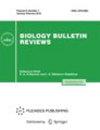阔叶林次生自生演替初期效应的分类学分析
IF 0.3
4区 生物学
Q4 BIOLOGY
Zhurnal obshchei biologii
Pub Date : 2016-07-01
引用次数: 0
摘要
以Stachyo sylvaticae-Tilietum cordatae结合体的演替系统为例,探讨了应用基于区系分类原则的分类学的可能性。分析了在强、弱土壤覆盖干扰条件下,以及在群落弱种松林和群落强种云杉种植条件下,立交地恢复演替的特征。强调了所研究的结缔组织具有很高的自我恢复潜力。本文章由计算机程序翻译,如有差异,请以英文原文为准。
[A syntaxonomic analysis of the initial stage effect on secondary autogenous succession of broad-leaved forest].
Using successional system of Stachyo sylvaticae-Tilietum cordatae association as a case study, the possibilities are considered of applying syntaxonomy as developed on the basis of floristic classification principles. Characteristics of restorative successions on cut-over lands have been analysed at strong and weak disturbance of soil cover as well as in plantings of coenotically weak species Pinus sylvestris and coenotically strong species Picea obovata. High self-restoring potential of the association studied is emphasised.
求助全文
通过发布文献求助,成功后即可免费获取论文全文。
去求助
来源期刊

Zhurnal obshchei biologii
生物-生物学
自引率
25.00%
发文量
6
审稿时长
>12 weeks
期刊介绍:
Публикуются статьи по теоретическим вопросам биологии, представляющие интерес для биологов любой специальности (вопросы эволюции, экологии, общей таксономии, общей цитологии, генетики, проблемы механизмов приспособления живых организмов к условиям существования, закономерности развития организмов, бионика и т. д.), основанные на новом оригинальном фактическом материале или же подводящие итоги работы того или иного научного коллектива.
Помимо теоретических статей, помещаются рецензии на новые книги российских и зарубежных биологов, а также информация о международных конгрессах и общероссийских совещаниях по важнейшим проблемам биологии.
 求助内容:
求助内容: 应助结果提醒方式:
应助结果提醒方式:


